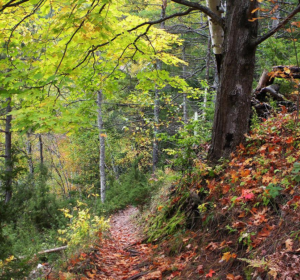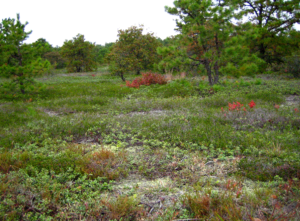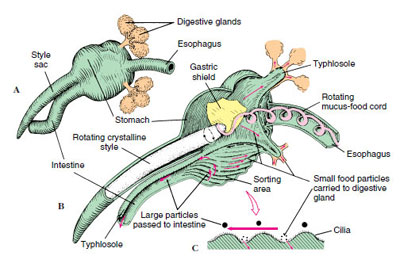
Barnegat Bay Environment
The Watershed
Upland Forests – Pine Barren Habitat
Upland Forest
Upland forests occur where drainage is sufficient so that soils do not become saturated for extended periods of time.
They range from xeric (extremely dry) through mesic (moderate soil moisture) to wet-mesic (wet, but not flooded soil conditions)
Definition:
Forest – A plant association predominantly of trees or other woody vegetation, a collection of stands.
Stand – An aggregation of trees or other growth occupying a specific area and sufficiently uniform in species composition, size, age, arrangement, and condition as to be distinguished from the forest or other growth on adjoining areas.
The pine barrens are more inland.
Most of the trees depend on forest fires to reproduce.
The soil does not have too many nutrients, and is very sandy and acidic.
Despite all this, it does support over 500 species of animals and 800 species of plants. However, this environment is gradually decreasing to due to deforestation and logging. It stretches across seven counties in New Jersey, and humans are clearing that space to build more civilization.
 Oak/Pine Upland Forest
Oak/Pine Upland Forest
Areas where the oaks predominate.
Ecologists believe that oaks are likely to predominate in areas where wildfire has been suppressed over long periods. In some areas, the oaks may out-compete the pines so thoroughly as to become virtually exclusive.
Black oak, chestnut oak, scarlet oak and white oak cover 40 percent or more of the ground and contribute 50 percent or more of the tree stems in oak-pine forests.
Black oak is the most common tree in stands north of the Mullica River
Southern red oak becomes prominent to the south.
The abundance of chestnut oak, scarlet oak and white oak vary from stand to stand.
 Oaks provide food and cover for a variety of wildlife.
Oaks provide food and cover for a variety of wildlife.
The acorns, which mature in early fall, provide food for birds (like woodpeckers, jays, wild turkeys, and wood ducks) and mammals (like squirrels, chipmunks, and deer).
Oaks are host to numerous insect larvae (caterpillars), which are eaten by birds and fed to their babies during nesting.
The larvae of more than 500 butterfly and moth species are found on oaks – more than any other tree species in the forest

